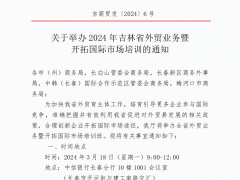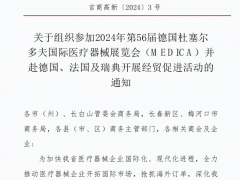Supply-side structural reform has now become another core concept that reflects the current leadership's ruling thinking after the "new normal". The Central Economic Work Conference more clearly defined the five major tasks of supply-side reform: reducing capacity, destocking, deleveraging, reducing costs, and making up for weaknesses. 2016 became the first year of supply-side reform. At the same time, supply-side reform also poses three challenges to macro-control: first, capacity reduction, deleveraging and the elimination of zombie enterprises, which means that it may increase the downward pressure on the economy; Second, increasing stock issuance is an important way to "deleveraging", but because the stock market has not really come out of the shadow of the stock market disaster in 2015, the market mentality is extremely fragile; Third, at a time when the world is worried about a "hard landing" of the Chinese economy, supply-side reform may also increase expectations of RMB depreciation.
Nevertheless, supply-side reform is imperative, and China's economy must go through the "pain period of structural adjustment" in the "three periods of superposition" before it is possible to usher in a healthy recovery. So how to make reasonable use of macro-control policies to "hedge" the risks of supply-side reform has become a major issue that must be seriously considered.
One of the policy choices of macro-control: loose monetary policy. On February 26 this year, the central bank changed its stance on monetary policy positioning from "prudent" to "prudent slightly loose". But from the actual situation, China's monetary policy is already "super loose". With M2/GDP already at 206%, relying solely on monetary stimulus is dangerous, as the recent surge in house prices is a warning sign. As Fang Xinghai, vice-chairman of the China Securities Regulatory Commission, put it: "The big risk for China is not a gradual slowdown, but that once the economy is stimulated to an unrealistic growth rate, it will suddenly collapse and fall on fire."
The second policy choice of macro-control is expansionary fiscal policy. China's fiscal policy still has a lot of room, but continue to increase government spending, or vigorously promote tax cuts? The problem with increasing fiscal spending, which is typical of Keynesianism, is that the marginal effect of investment stimulus is diminishing due to the rising investment-output ratio; The focus of government spending on infrastructure can only provide a boost to a few industries such as steel and cement, but cannot really ease the pressure on the real economy. From the perspective of China's debt structure, corporate debt is heavy, so the direction of "deleveraging" should be to increase government and household debt, reduce corporate debt, and expand government investment is difficult to play such an effect.
Tax cuts, by contrast, are considered central to supply-side economics. The effect is as follows: it can reduce the burden on enterprises and individuals, and then improve the profits and investment capacity of enterprises and the consumption capacity of individuals, so that microeconomic entities can obtain greater incentives and vitality; It can demonstrate the sincerity of reform and stimulate market confidence. It can form optimistic reform expectations and boost the stock market.
The third choice of macro-control: stabilize the property market. According to research by Standard Chartered Bank, housing and related sectors contributed 3 percentage points to China's GDP growth in 2010 and only 1.1 percentage points in 2015. Over the same period, economic growth slowed to 6.9% from 10.6%. On that basis, half of the decline in economic growth is due to the housing slump. Therefore, stimulating the property market can indeed have the effect of stabilizing the economy. However, this policy also has a negative effect, under the policy expectation of "stimulating the property market", the soaring property prices in first-tier cities are bound to suppress the consumption power, which is contrary to the direction of economic rebalancing (reducing the investment rate and increasing the consumption rate).
The fourth policy choice of macro-control: RMB depreciation. Given that the real effective exchange rate has appreciated 29 per cent since the 2008 crisis, a weaker renminbi has the effect of stimulating exports and boosting the economy. However, from the current situation, international investors have a certain negative impression of the Chinese economy, and the depreciation of the yuan may trigger capital flight. Therefore, depreciation needs to wait for the right time window, supplemented by effective "post-depreciation expectation management" to avoid financial shocks.
2016 is a year of supply-side reform, but also a year of further increase in risks and uncertainties, and it is necessary to hedge risks with macro-control. From the perspective of options, tax reduction is not only a macro-control policy with small negative effects, but also an important content of supply-side reform.
 Customer service hotline:
4000085670
Customer service hotline:
4000085670
-
My purchase list
- Customer service center|
- VIP service |
- sitemap
Characteristic channel
- Industrial chain
- Supply chain
- cross-border procurement
- Global market
- exposition
- Cross-border talents
- Cross-border common sense
- Service area
- Map storage
- Conversational brand
- Direct broadcasting room
- Cross-border download
- Overseas purchase
- Group buying
- Curriculum vitae
- Dynamic state
- News media
- Attract investment overseas
- National pavilion
- Help center
- Idle resource
- Import & Export
Extended zone
- Mobile terminal
H5 Mobile terminal
Mobile access is faster
Wechat public account
Mobile check-in wins points
Wechat mini program
Play with mobile new marketing



